One of the world’s most diverse Nations has planned a gateway to enter its center of Literature, Art and Music.
An airport which is a magical amalgamation of Rich Heritage of Gwalior City and Contemporary Architecture, continuing the Journey beyond the Runway.
Client : Airport Authority of India
Location : Gwalior, Madhya Pradesh
Built-up Area: 20,000 SQM
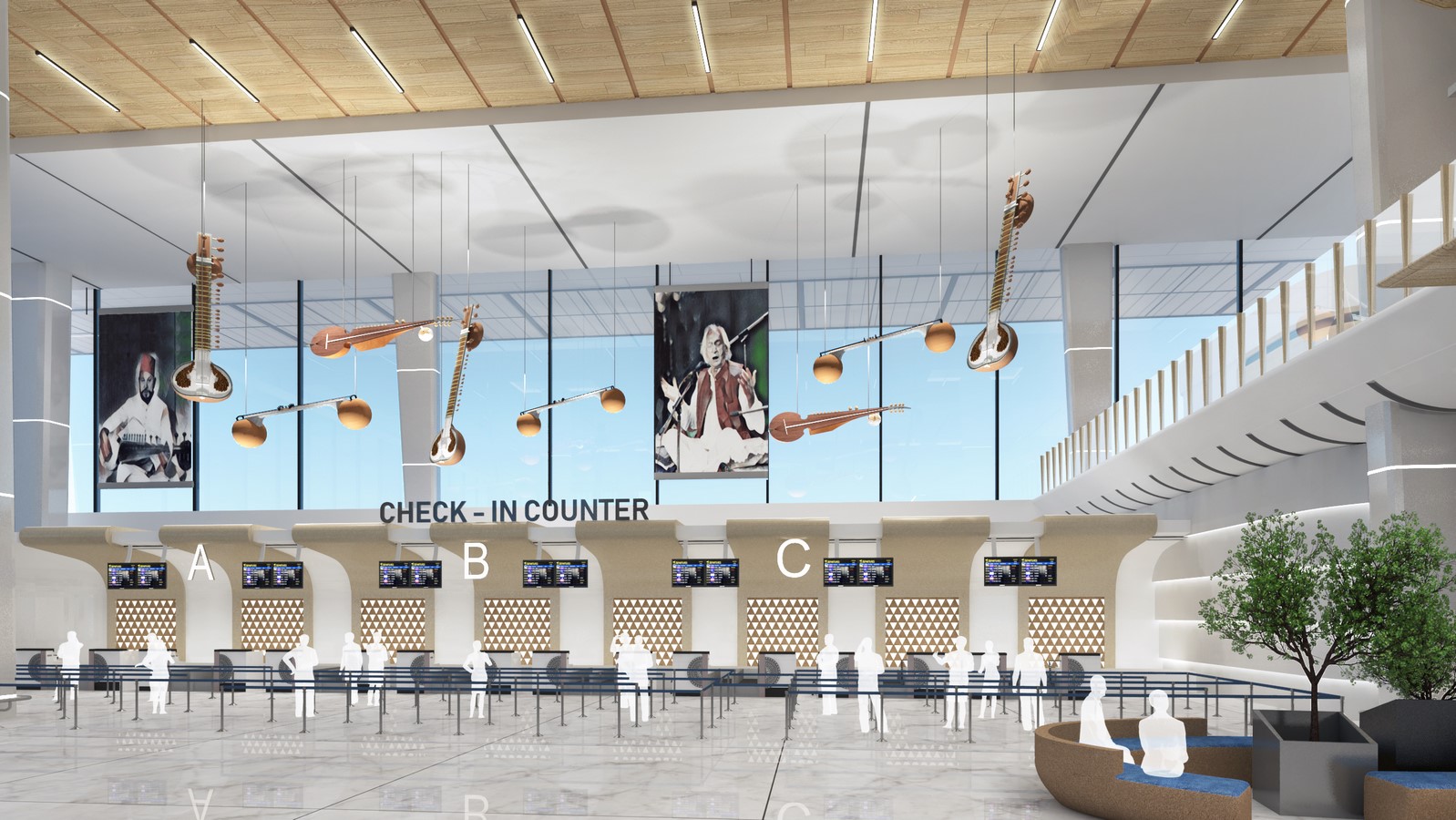
The team at Creative Group have always stood by the philosophy of “a built form should not be treated as a dead mass of brick and concrete, but as a living organism, allowing it to breathe with nature” says Ar. Charanjit S. Shah, Founding Principal, Creative Group.
Gwalior is a city where the glory of Hindu Kingdom is testified by its grand palaces and marvelous engineering of temples till today. A city where great musicians passed on their knowledge to the world. Famous for its pottery tinted with hues of white and Persian blue makes the Gwalior pottery exceptional.
The brief broached Gwalior Fort as an inspiration to be taken for the design.
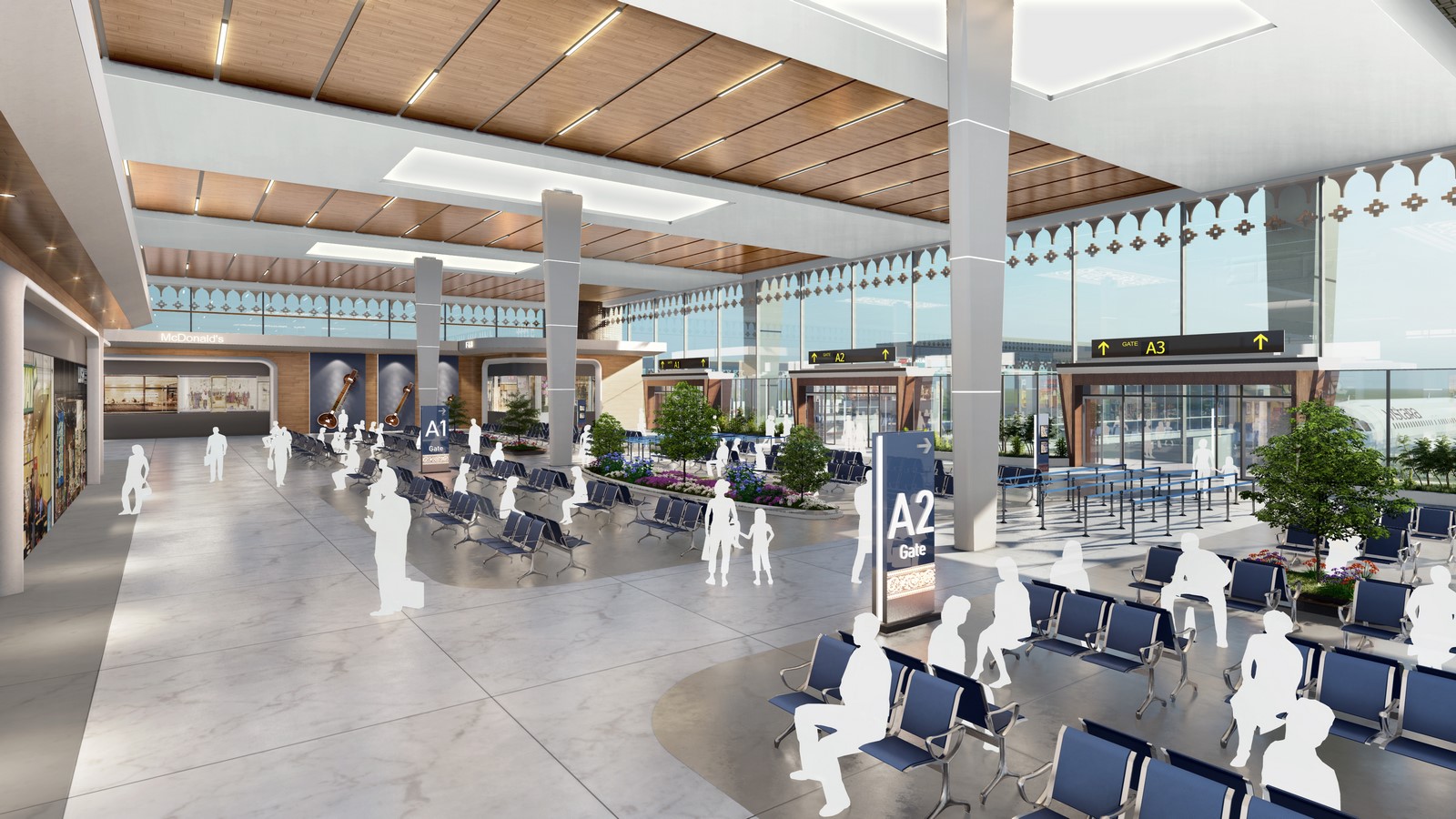
Gwalior Fort with its thick sandstone walls looks like a strong headed soldier guarding its city and public. An architectural marvel from the 8th century set on a hilltop, consists of two main palaces, temples, and water tanks. The Teli-Ka-Mandir and Mann Singh Palace are the most well-known among them.
Mann Singh Palace within the complex of Gwalior fort speaks for its splendid beauty with the hues of blue, green and yellow truly makes Gwalior fort ‘pearl in the necklace of the forts of Hind’, built by Raja Man Singh during his reign for his wife .
“We, as architects, have the responsibility of making architecture a force for mobilizing cities and rejuvenating culture” says Ar. Gurpreet Shah, Infrastructure expert.
The detailing of Man Singh Palace solely lies on its elements from Hindu Architecture with sequences being followed, commanding each and every minute elements to form the flawless grand structure.
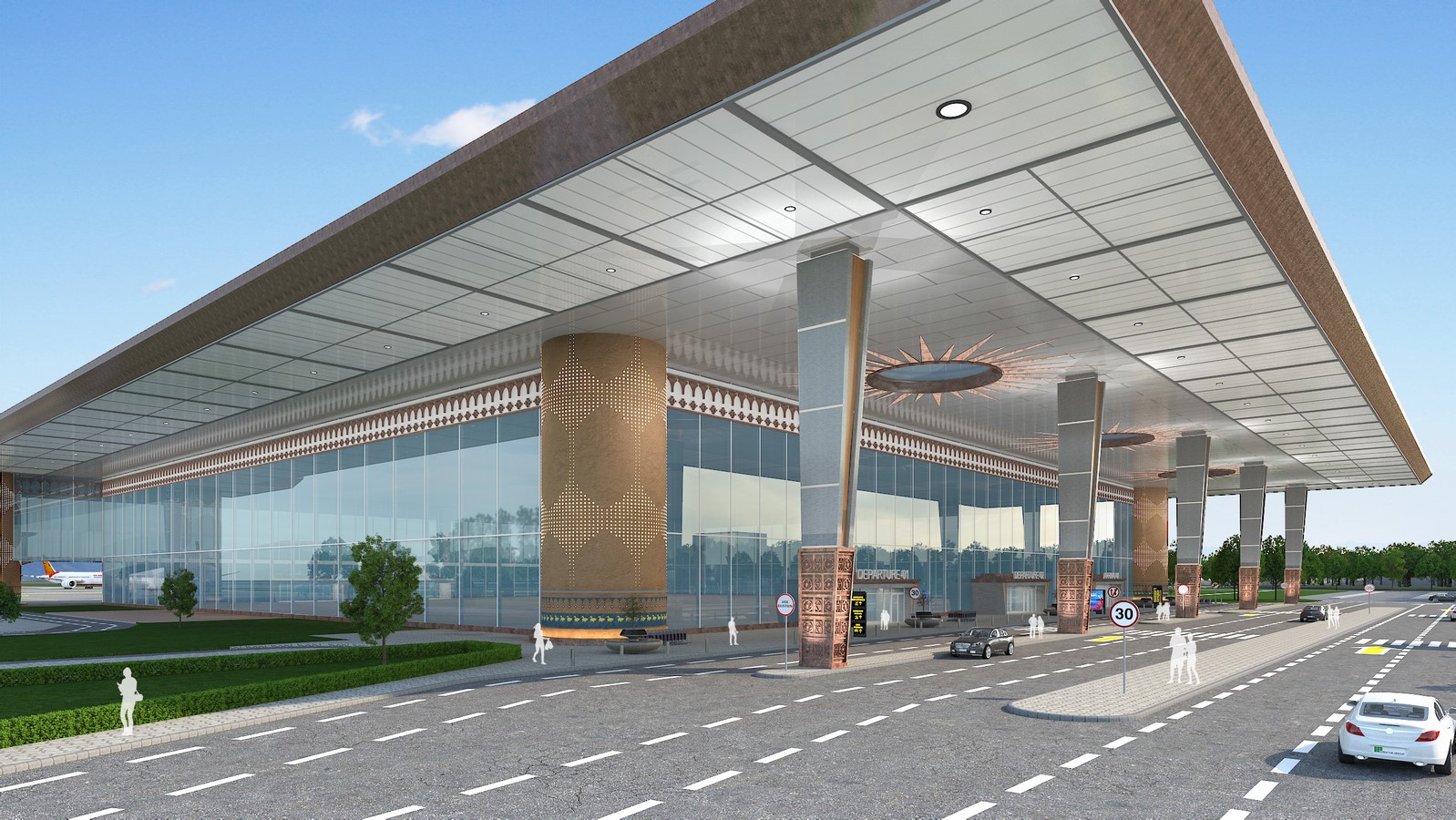
Ar. Gurpreet Shah and team says “While visiting the Fort and Man Singh Palace for better understanding of the context, history and architecture of the palace, we saw splendid usage of beautiful elements throughout the fort. The carved Jharokhas, Courtyards, detailed cornices, motifs everything was in sequence. The blue colored Persian tiles splashed a fresh breeze of moist air in a dry surrounding, making the eyes reach tranquility. All these prominent features kicked us to start the design.”
While Designing an Airport the architects do face a lot of challenges, from making it a global facility to managing such large public spaces to creating an aesthetically pleasant structure including commercial and financial feasibility.
The Inspiration : Man Mandir Palace
In search of the essence of what can be incorporated from the Heritage so that it gives a proud sense to its people.
To reflect the soul of past glory in the contemporary era, the creative group LLP team studied the minute details of Mann Singh Palace’s architecture.
The solid belief in focusing on People, Place, and Purpose while constructing a space, building, or structure. Connecting spaces and people completes the actual idea of architecture, and such a network feels light in the environment, says Prof. Shah.
The great observation and continuous brainstorming picked the Rajputana elements from Jharokhas to Cornices to motifs of Flora-fauna.
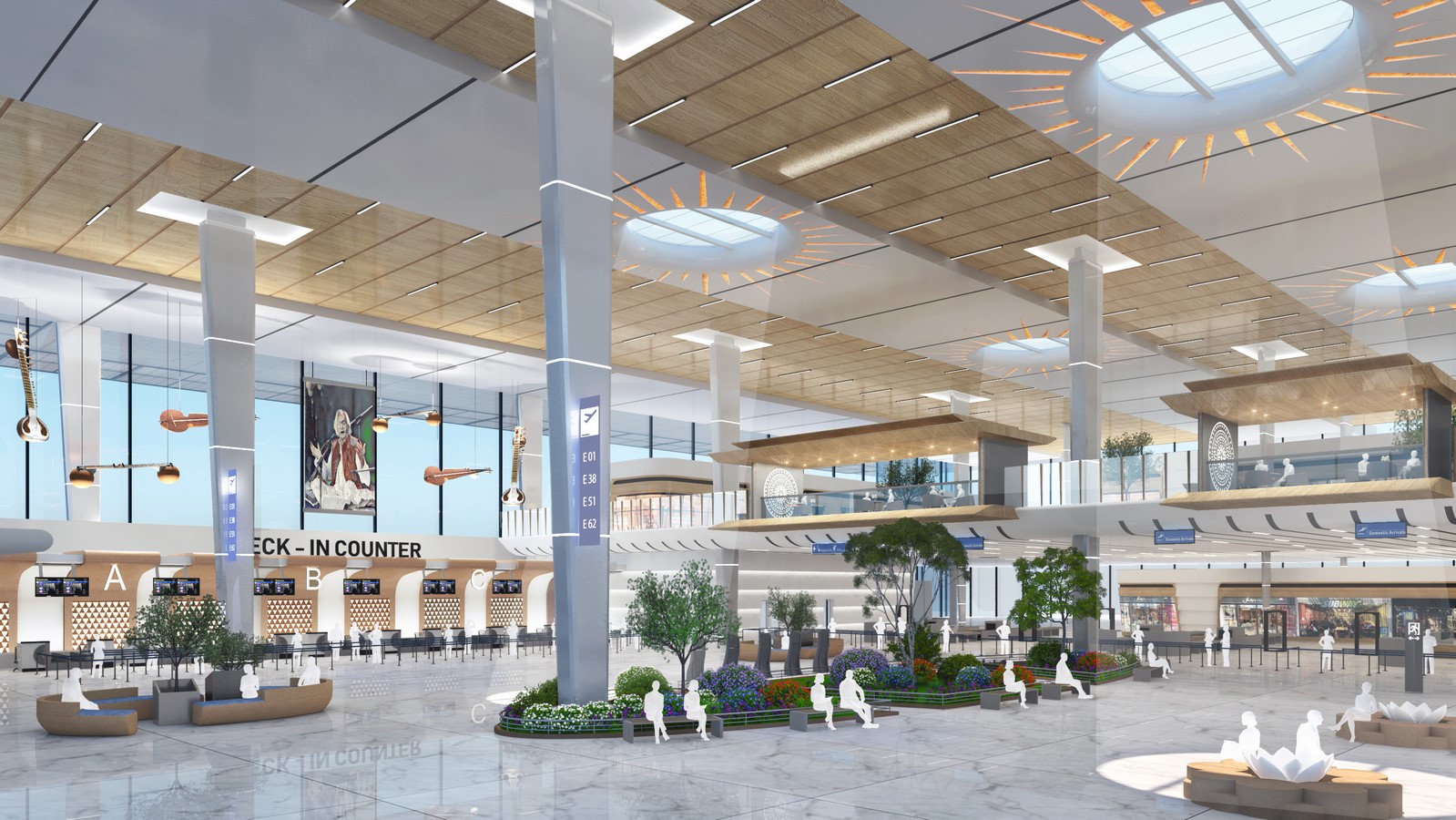
Jharokhas being one of the most prominent features of Rajputana Architecture inspired Ar. Gurpreet Shah and team to incorporate the element in the design with modern perspective.
Another Design feature of the facade was “Hathi pol”. Hathi Pol is a gateway designed in the Gwalior fort for passage of elephants.
With columns being inspired by the Bastions, the major source of inspiration of the Man Mandir Palace, Creating a realization of entering into a grand building.
The main design idea included Mandir Minarets. The Chattris were directly influenced by the Mandir. For the front elevation, several jali motifs were used as artwork. The columns are also based on the carvings on the fort, which were discovered to be in a multi-centered arch and were used as a significant feature in the elevation.
The brainstorming changed the brief from Heritage to Scandinavian Architecture. The team faced a lot of challenges in order to fulfill the desired requirements.
With a lot of transforming and modification stages, the team turned all the challenges into their favor to get a great structure complimenting the past, present and future of the city.
Hard work and dedication are exemplified by a team that can submit 30 proposals for such a large-scale project. With constant changes, the team led by Ar. Gurpreet Shah was able to finalize the design with content.
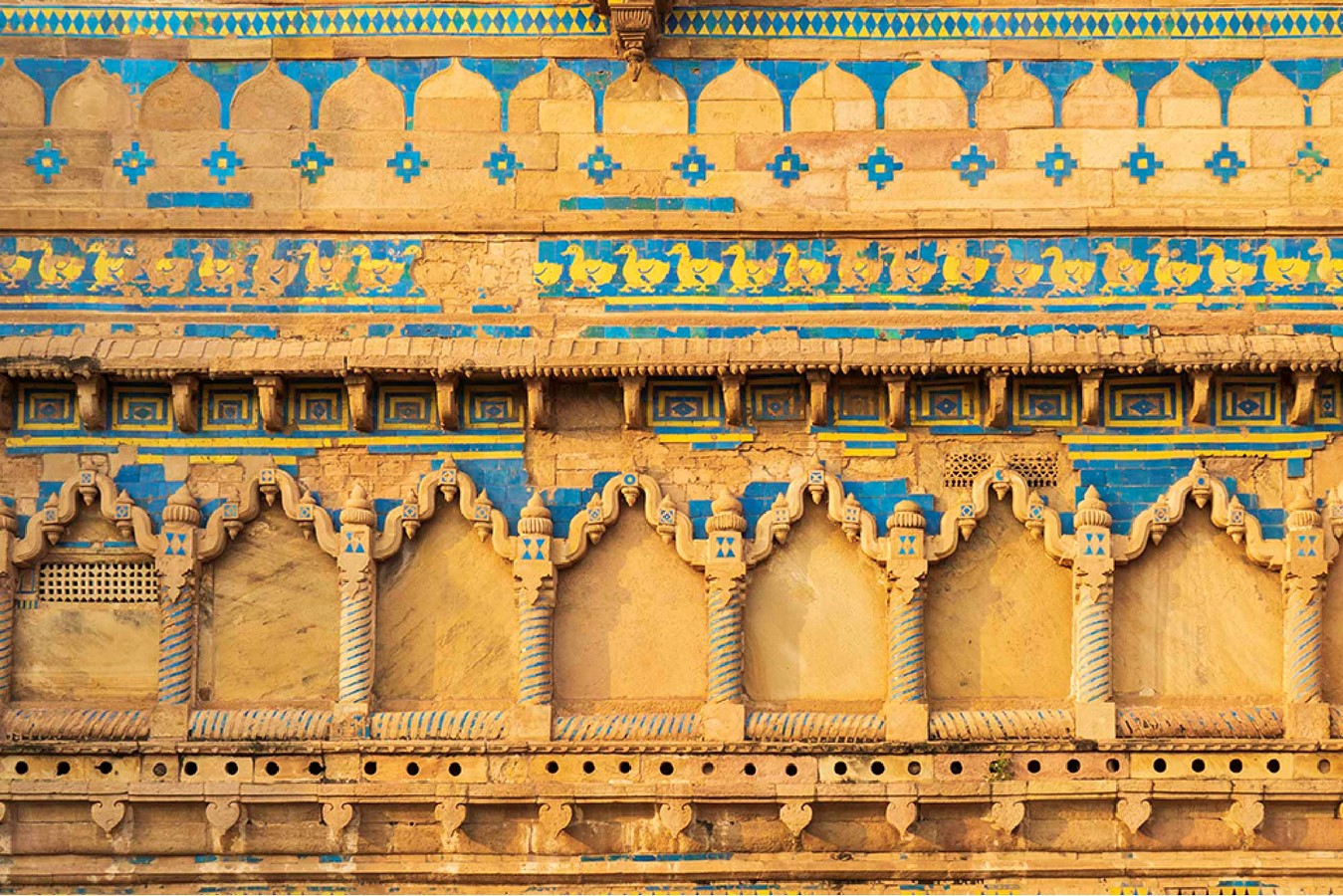
The Harmony
The patience and dedication brought the team into balancing between Heritage, Scandinavian and Contemporary architecture.
The team did their best in honoring the Glorious Past of Gwalior along with the Modern world Technology, functionality and user Experience.
After finalizing the exterior now it was the time to focus on Interior of the building. The elements of Mann Mandir Palace were taken the inspirations to design the interior. The challenge of incorporating and justifying each and every element while complimenting the contemporary look.
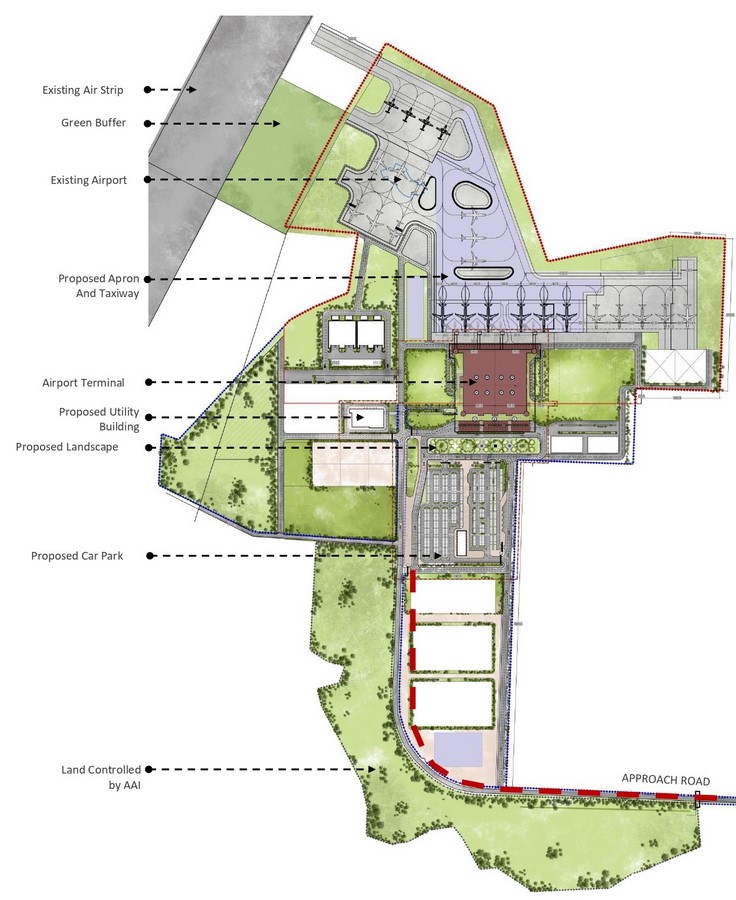
Ar. Gurpreet Shah and team now started brainstorming on the interior of the Airport. They wanted to use the art and literature of Gwalior to honor it and wanted to give the users an experience of roaming into the History and great legacy of the Gwalior City.
The team came up with displaying Musical Instruments, pottery and Great Musical legends coming from Gwalior.
Gwalior is the birthplace of pottery workshops. Colored in shades of white and Persian blue (especially), this color of pottery is truly unique.
Gwalior’s “Gharana ” is considered to be the oldest style of Indian classical music and brought to the world Baijunath Mishra, later Baijubaura, who could light oil lamps by singing the Deepak Raag.
Gwalior Airport Truly is being designed as the dream of millions of passengers travelling the city of Art & Music by creating a modern structure yet not forgetting to honor the great architecture and Heritage of Gwalior city.
Making the airport itself a gateway to the Journey of Old Times and giving the users a chance to relive the old world with modern tiles under their feet.




















